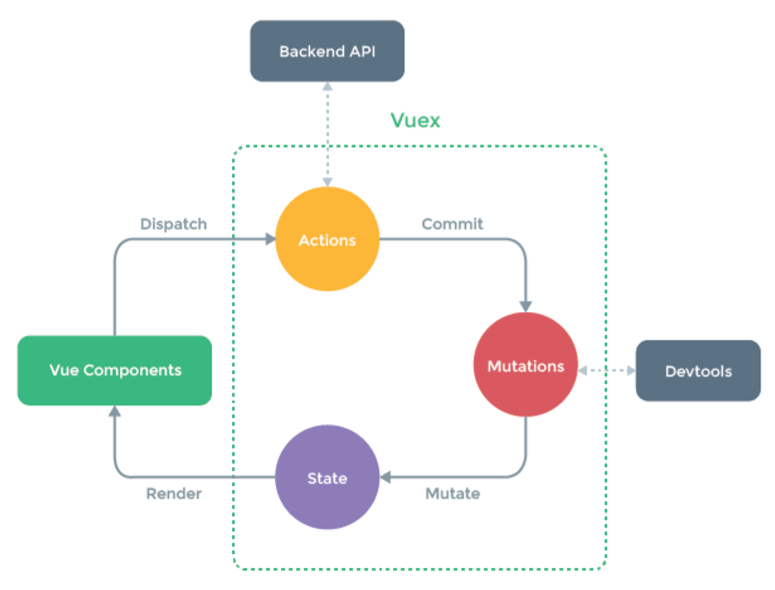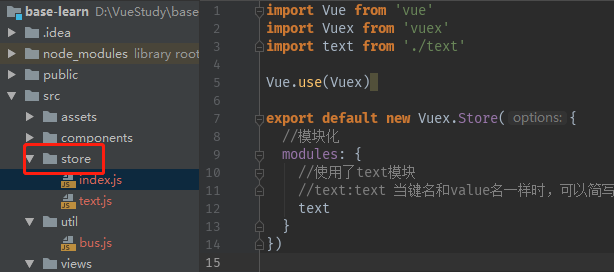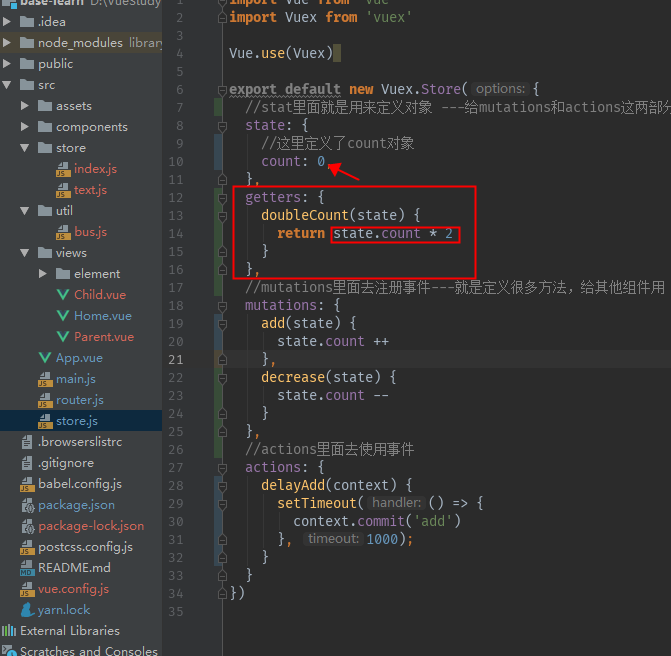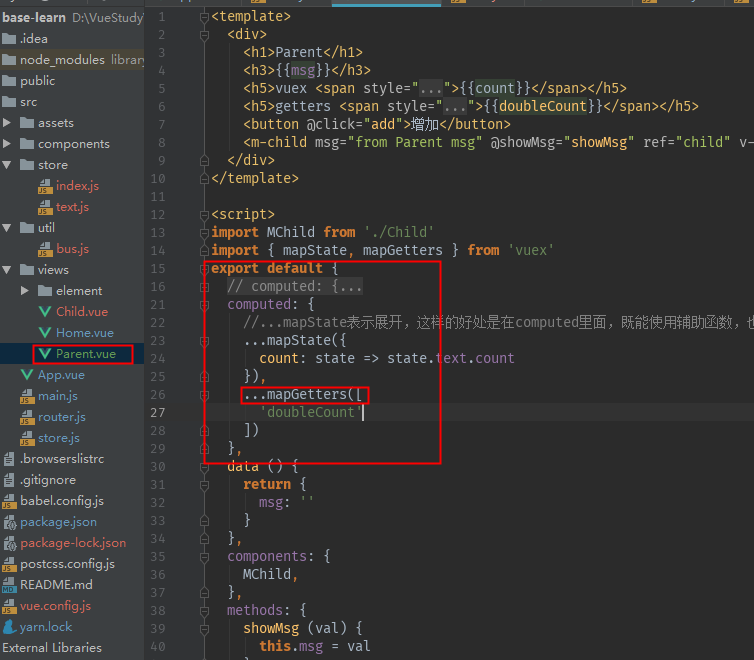一.vuex的简介
Vuex 是一个专为 Vue.js 应用程序开发的状态管理模式。Vuex背后的基本思想,就是前面所说的单向数据流。图4就是Vuex实现单向数据流的示意图。

Store
每一个 Vuex 应用的核心就是 store(仓库)。“store”基本上就是一个容器,它包含着你的应用中大部分的状态 (state) 。
State
Vuex 使用单一状态树——是的,用一个对象就包含了全部的应用层级状态。至此它便作为一个“唯一数据源 (SSOT)”而存在。单一状态树让我们能够直接地定位任一特定的状态片段,在调试的过程中也能轻易地取得整个当前应用状态的快照。
Mutations
Vuex 的 store 中的状态的唯一方法是提交 mutation。Vuex 中的 mutation 非常类似于事件:每个 mutation 都有一个字符串的 事件类型 (type) 和 一个 回调函数(handler)。
Action
Action 类似于 mutation,不同在于:
1.Action 提交的是 mutation,而不是直接变更状态。
2.Action 可以包含任意异步操作。
二.vuex的配置
定义store.js
import Vue from 'vue' import Vuex from 'vuex' Vue.use(Vuex) export default new Vuex.Store({ //stat里面就是用来定义对象 ---给mutations和actions这两部分使用 state: { //这里定义了count对象 count: 0, }, getters: { doubleCount(state) { return state.count * 2 } }, //mutations里面去注册事件---就是定义很多方法,给其他组件用 mutations: { add(state) { state.count ++ }, decrease(state) { state.count -- } }, //actions里面去使用事件 actions: { delayAdd(context) { setTimeout(() => { context.commit('add') }, 1000); } } })
在计算属性中监听对象的变化,并且提供映射
//使用计算属性的方式 computed: { count() { return this.$store.state.count } } //使用**********辅助函数***********的方式
//引入辅助函数
import { mapState, mapGetters } from 'vuex' export default { computed: { //...mapState表示展开,这样的好处是在computed里面,既能使用辅助函数,也能使用在computed里面使用其他计算属性
...mapState({
//count: state => state.text.count模块化的方式,vuex模块化之后,只能这样监听计算属性
count:this.$store.text.count
}), ...mapGetters([ 'doubleCount' ]) },
使用$stor.commit或者dispatch去分别触发 mutations 或者 actions里面的方法
methods: { add() { //this.$store.commit是用来触发mutations this.$store.commit('add') //this.$store.dispatch是用来触发actions的操作 this.$store.dispatch('delayAdd') } },
三.Vuex模块化的配置
建立一个store文件夹

将对应的模块导出,引入到index.js里面即可

四.Vuex中的计算属性getters

